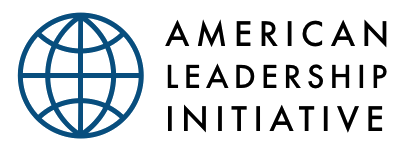With China at the Wheel, America's EV Journey May be a Bumpy Ride
/Author: ALI CEO Orit Frenkel, as published in The Hill, January 27, 2023
The electric vehicle revolution that’s been sweeping the world has finally arrived in America, powered by technology, an urgency to address climate change and the nudge of government incentives that became a push with the Inflation Reduction Act.
This is good news, it seems — until you look under the hood.
Current U.S. trade policy and the tight requirements written into the Inflation Reduction Act for EV tax credits (which took effect Jan. 1) will undermine the adoption of EVs in the United States by limiting access to vehicles made by close allies like Germany, Japan and Korea. Our global partners, like the European Union, also might retaliate with their own subsidies or local manufacturing requirements. This must not be our future.
The Inflation Reduction Act has rightly been hailed as a savior of U.S. climate policy. It’s part of the federal government’s effort to ensure half of all vehicles sold in 2030 produce zero emissions. The new law provides consumers a $7,500 tax credit for EVs but requires that EVs be manufactured in the U.S, that 60 percent of the batteries be made in the U.S. and that a battery’s critical minerals be mined, processed or recycled in the U.S. or in a country with which the U.S. has a free trade agreement. No components can come from “a country of concern,” such as North Korea, Russia or the EV kingmaker, China.
The dirty little secret is that it will be nearly impossible for EVs in the U.S. to meet these requirements. Today, Chinese companies control 80 percent of all critical minerals, including 80 percent of the world’s cobalt refining capacity, 82 percent of the world’s graphite production and 93 percent of global manganese refining. It is not a surprise, then, that China has more than three-quarters of the world’s manufacturing capacity for EV batteries; a single Chinese company, CATL, controls one-third of the entire global battery market.
China also controls mines in impoverished countries, like Congo, which has the world’s largest cobalt supply. Conditions in these mines are notoriously dangerous, with poor labor and environmental conditions. Through its Belt and Road Initiative — Beijing’s aggressive foreign policy scheme that buys influence through investments — China has co-opted key ports and infrastructure in Africa, allowing China to dominate mining and mineral trade in the continent.
China has made inroads into America’s backyard, too. Its companies have invested in Brazilian mines in order to ship minerals to China for processing. Stunningly, China is now the largest trading partner with Brazil and Uruguay, and even Chile and Peru, with which the U.S. has free trade agreements. Recognizing this growing threat, the White House last year announced a new regional framework, the Americas Partnership for Economic Prosperity, which could provide an important forum for strengthening critical mineral supply chains in the region.
Addressing the vulnerability posed by China’s domination of this vital green industry will take time, strategic savvy and political compromise. Policymakers will need to thread the needle, as America’s economic security, national security and environmental needs all converge on the electric vehicle stage. Working closely with our allies that share our values, the U.S. must diversify and green its supply chains, invest in our geographic sphere of influence, and negotiate new environmental trade agreements.
At the Feb. 7 State of the Union address, it’s a safe bet that President Biden will tout the legislation that is pumping $369 billion into climate efforts. But to make this important investment pay off, he should also announce detailed plans to work with allies to create the global EV supply chain we need. Last year, the United States formed the Minerals Security Partnership, which includes a group of allies — the European Union, Canada, Australia and Japan, among others — partnering with mineral-producing countries to bolster mineral supply chains. However, additional R&D funding and public-private partnerships are needed to encourage the private sector to invest in new mines and technologies.
Failing to recalibrate our policies would give Beijing critical leverage over a global industry that will only swell in importance, a scenario we’ve seen in the war in Ukraine as Russia has weaponized its energy resources to subdue European partners.
The president has taken some key steps to support domestic battery investment and critical mineral R&D, starting with $6 billion for this work included in the Infrastructure Investment and Jobs Act of 2021. The U.S. Department of Energy also has allocated $2.8 billion in private sector grants for the building and expansion of commercial-scale facilities for minerals extraction and processing. However, the administration should also direct USAID, the Department of Energy, the International Development Finance Corporation and other U.S. government agencies to designate funding to create a public-private umbrella organization to encourage investment in critical minerals in the Western Hemisphere, where China is ascendant.
The U.S. has plenty of wheels turning toward a future that is less reliant on China, but the U.S. needs our partners to ride with us. The administration must look for regulatory fixes to ensure that EVs from Japan, Korea and the EU can qualify for Inflation Reduction Act tax credits. Without this, EV sales in the U.S. will fall short. Even so, this fix would be but one move in a chess match that will play out over the next decade.
Investing in a green future that relies less on China would bolster U.S. national security, strengthen the U.S. economy, and advance environmental progress. The road to less reliance on China is a long and winding one, but the right trade and industrial policies will help ensure that Washington, rather than Beijing, has its hands on the wheel.



